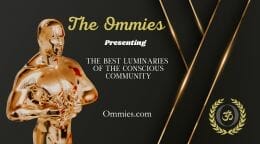Nirvana, The Elusive Mystery

by Arthur Telling
In Buddhism there is a final state of becoming called “Nirvana” (also Nibbana). Various Buddhist disciplines have differing views about the concept and experience of Nirvana. Some say Nirvana is beyond words, and we can only understand it by years of meditation. But there is agreement as to the general nature of Nirvana.
We extinguish desires and cravings through meditation and contemplation. Thus, attachment to the physical senses terminates, and with this, existence ceases. The difficulty of comprehending life as we understand it without there being existence is troubling for many, and seemingly impossible to communicate. The typical description given for Nirvana is a “formless bliss.”
Cessation of Identity
The concept of “existence” is largely misunderstood, particularly in the West. The term existence implies there being identity. It is the loss of identity, not of the physical senses, that brings a cessation of existence. Yet Nirvana will not be corralled by the physical senses, of course. There are predictably an infinite number of worlds and planes. The pure energy that comprises these worlds and planes is immeasurable. The vibrations and intensities of energy allow for innumerable kinds of life and experiences.
Thus, we may view Nirvana as unrecognizable and indescribable. The experiences in Nirvana need not conform in any way to our physical experience. To explain Nirvana using our terms we must understand our three-dimensional physical world experience not as reality but as language, a communicating using images, sounds, emotions and thought.
Every thought, emotion, image, and sound is thus a word, that we speak or express to convey information about ourselves or something. By understanding our physical senses as being a full-blown three-dimensional language, the mysterious state of Nirvana can be explained.
Releasing Attachments
Nirvana is the cessation of existence. We exist now as John or Mary because of attachment through our emotions to things and beings, which we see as forms and experiences. The forms and emotions are themselves not existence, but they support our existence through the illusion that they are self-sustaining and independent, and through our dependence on them.
By dropping our attachments, by seeing our eternal natures which are not dependent on these forms and feelings, existence then ceases. But the forms and emotions need not dissolve away. Now, with attachment eliminated, the forms are unnecessary but may be useful, for communicating and interacting.
The experience would be like awakening in a dream, a lucid dream. Thus, in a dream there is no attachment. We know that what is in the dream is illusion, and does not exist. Yet we do participate in activities of the dream. In a dream anything is possible, even an appearance of forms and shapes that are outside of anything in the world.
Awake and Alive, and in Nirvana
The Buddha became enlightened, entering Nirvana during his lifetime. Through prolonged intense meditation, he dissolved his attachment to his gender, birthright as prince of a kingdom, father of a baby son, and husband. Having no attachment to the world and its narratives, his existence as a person ceased, and he entered the blissful state of Nirvana in this world. He lived on for another forty years travelling and teaching the path for awakening to his disciples and to lay people.
End Goal of Human Life
Nirvana, I believe, is the inner state of mind of the enlightened being. It is an inner tranquility unmoved by the distractions and defilements of the lower energies making up the various worlds and spiritual planes. In such state, the enlightened being may visit such worlds unattached and unaffected. In the state of Nirvana is the supreme perfect energy, at his disposal for creating worlds. It is a blissful and formless state of rest, unblemished, a blank canvas, there awaiting the artist’s brush.
About the Author
Arthur Telling has written numerous stories and articles on religion, philosophy, and metaphysics. His article, “A Different Jesus Message” appeared in the Nov. 2011 AMORC Rosicrucian Digest. Telling is the author of “Johann’s Awakening” (a parody of Jonathan Livingston Seagull). His three novels include “Kaitlin’s Message,” exploring the secret sayings of the Gospel of Thomas. His web site is: www.arthurtelling.com
OMTimes Magazine is one of the leading on-line content providers of positivity, wellness and personal empowerment. OMTimes Magazine - Co-Creating a More Conscious Reality









